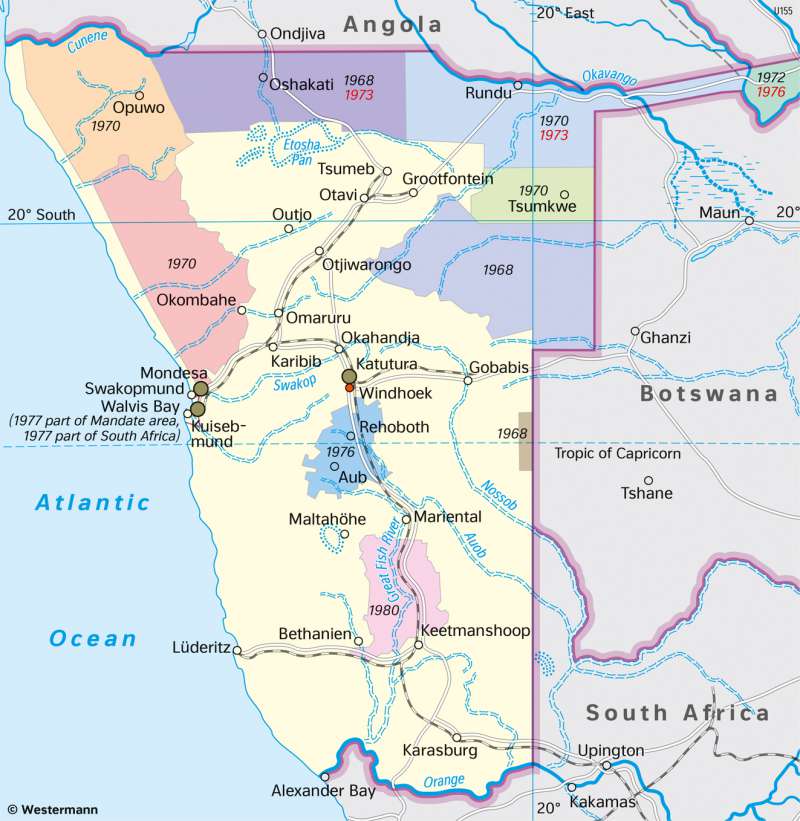South West Africa (mandate area) - Apartheid around 1975
History and countries
978-3-14-100890-6 | Page 144 | Ill. 5

Overview
After the First World War, the former colony of German South-West Africa was under South African administration. The Union of South Africa, later the Republic of South Africa, treated the country de facto as part of its own territory ever since and refused to administer the territory in trusteeship of the UN in 1945. Instead, it also introduced the apartheid policy that had been in force in the Republic of South Africa since 1948, a legally stipulated separation of the "races" in favour of white political and economic domination.
Apartheid in South West Africa
on in South Africa's apartheid policy led to an intensification of the smouldering conflict with the UN. Domestically, resistance was organised in the form of the formation of the South West African People’s Organisation (SWAPO), which launched a guerrilla war against the South African occupation. In 1966, the UN General Assembly officially withdrew South Africa's mandate over South West Africa, which was given the name Namibia by the UN in 1968. In 1971, the International Court of Justice declared the South African presence in Namibia illegal under international law. Under international pressure, South Africa modified its policy and dismantled apartheid laws, for example by abolishing the homelands. In 1974, it decided to convene a constitutional conference.
After the UN Security Council adopted a peace plan for Namibia in 1978, South Africa reacted by holding the first general elections, from which - due to manipulations - the Democratic Turnhalle Alliance (DTA; today: Popular Democratic Movement), dominated by the white minority, emerged as the winner. It was only in 1988, shortly before the political turnaround in its own country, that South Africa finally agreed to give up the occupation.




